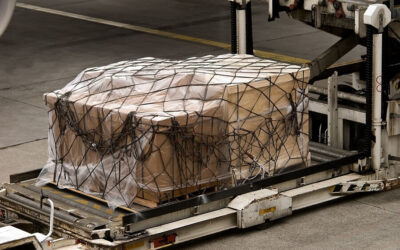How to Ship Lithium Batteries Internationally By Air
Shipping Lithium batteries is a highly regulated activity. You must keep your shipping safe as a responsible exporter.
You need to follow safety guidelines either you are a manufacturer or even an exporter. In this guide, we will help you to ship Lithium batteries with maximum care.
The proliferation of electronic devices in the public is growing on a daily basis. You have a greater number of devices in your home today as compared to decades ago and before. These devices are dependent upon their batteries. We know these batteries as lithium-ion batteries because they have lithium in them.
Countries like the USA, China, and Indonesia export these batteries on regular basis. These are worth billions of dollars. But you must know one thing before thinking about the trade of Lithium batteries. And it is that these batteries come under the category of ‘dangerous goods’. Guess why
So why the Lithium batteries are kind of ‘dangerous goods’?
You might become surprised to know another thing about them. These batteries have a flammable substance that can explode. And that is the risky aspect that makes them a dangerous item.
For example, in 2008, Ryanair caught fire due to a passenger charging his phone. They had to evacuate all the passengers. Thus, there are certain guidelines and compliances to follow in order to ship them.
But before moving towards other complexities, let’s find out how many kinds of batteries are there.
Table of Contents
Types of batteries
There is a number of batteries for different electric appliances. These are rechargeable and some non-rechargeable too. Even, according to the document by IATA lithium batteries are of two classes. One is a lithium metal battery and the other one is a lithium-ion battery.
The former one is non-rechargeable and its lithium is metallic. Whereas the latter one is is rechargeable and its lithium has an ionic form in the electrolyte.
Both types are further divided into several types according to their material. Although, these both kinds of batteries need approval from the state of origin. They also need approval from the destination, and Operator.
To further ensure the safety of the transport, the IATA has imposed a State of Charge (SoC). It’s limited to 30% on lithium-ion batteries. If the SoC exceeds this limit then they must take approval from their destination.
If you wonder what SoC is then let me tell you. To keep it simple it is a measure of energy available in an electrochemical battery.
Now, let’s have a look at the general guidelines for shipping Lithium batteries.
General Guidelines for Shipping Lithium Batteries Internationally
ICAO / IATA have tightened the requirements. It is for the carriage of lithium batteries, which implies stricter airline compliance.
It is the shipper’s legal responsibility to transport such cargo safely by air. And he should adhere to ICAO / IATA requirements.
With this in mind, IATA has developed guidelines to help you. It is to better understand and comply with current requirements.
Shipments of lithium batteries require appropriate markings. These are signs or a special permit for the delivery of dangerous goods that must be obtained.
Here are the guidelines you must remember:
- Lithium batteries are packed and shipped as separate items. Example: external batteries.
- Lithium batteries are packed separately. But the shipment should be in the same box as the equipment. For example, if you are shipping your laptop with a lithium battery.
- Lithium batteries are part of or installed inside the equipment. And therefore, the shipment is in the same box. Example: a tablet with a built-in lithium battery.
Here are few more things you must be aware of to ship lithium batteries
You are responsible for following IATA’s guidelines as is mentioned incoterm. You are entitled to acquire this because your name is in
To avoid such undesirable consequences, you should tell it to staff urgently. The courier will advise you on the latest IATA dangerous goods transport requirements. Those will be valuable for you their regulations.
Important..!!
You must always check before shipping, whether the battery is dead or is it working?
Once you’ve followed these guidelines then it is time to take care of the packaging process.
How to Pack Lithium-ion batteries for Shipping Through Air?
Safety first! While packing, the very first thing you have to take into consideration is safety. Make sure that the terminals of the batteries don’t come into colliding with others. They can cause a short circuit.
You should ensure that your books are in your DP. Then you must make sure that they are separately packaged in a rigid strong pack.
You can do the following things to avoid short circuits:
- You should pack each battery or device with the battery individually with some non-conductive material.
- Make sure there is no contact between the terminals of the battery with any other conductive material.
- If the terminals are unveiled then cover them with some non-conductive caps.
- Apart from that, you must keep the batteries in such a way that they don’t move and don’t depend only on the upper or outer packaging.
- These instructions are important for you to secure the terminals of the batteries:
- The terminals of the battery should be covered
- The packaging of the battery should be hard
- Batteries should be constructed in such a way that their terminals are recessed. It is to reduce the chances of short circuits.
After completing each step make sure that you also display the label on the box as well. The label with the UN number which looks like this

- A place for UN number(s)
** Place for the telephone number for additional information
Now, let’s talk about the cost involved in this process of shipping Lithium batteries internationally through Air.
Cost of shipping Lithium batteries through Air
Everyone knows that shipping through air costs far more than land or ocean. But it offers you a long route covered in a very short time so you can’t avoid the temptation.
But how much does the air shipping cost? If you don’t know, it doesn’t matter. We’ll tell you and then it will be easier for you to understand.
For the Air Freight, the cost of shipping is calculated by multiplying the rate by the taxable weight (actual weight)
Then, in turn, are calculated based on the weight of the goods and the overall volume of the same.
This will help you further with the calculation of Air Freight cost.
How to calculate taxable kilograms in air shipments
The weight-to-volume ratio is very simple:
For each cubic meter of a footprint, a weight of 167 kg is estimated
(Formula: 1 CBM = 167 kg)
But if the weight exceeds the estimate, the tax will be applied to the real weight.
Here are some examples:
We have to send a package by air that weighs 105 kg and with the following dimensions:
length 118 cm (1.18 meters) X width 79 cm (0.79 meters) X height 90 cm (0.9 meters) = 0.84 meters cubes.
In this case, the airline will charge us a cost linked to an estimated weight of the goods equal to:
0.84 X 167 = 133.6 kg or 28.6 kg more than the real weight.
We have to send a package by air that weighs 180 kg and has the following dimensions:
length 120 cm (1.2 m) X width 80 cm (0.8 m) X height 100 cm (1 m) = 0.96 cubic meters .
In this case, the airline will make the following calculation:
0.96 X 167 = 160, 32
But since the real weight (180 kg) is higher than the taxable one (the actual one), the tax will be applied to the real weight.
Once the tariff and the taxable weight have been established, a simple multiplication will be enough to know the cost of the shipment (net – as mentioned above – of insurance, customs costs, etc.).
How Freight Forwarder can Help You Shipping Lithium Batteries?
Freight forwarders ensure to provide maximum security for your freight. They work with the top cargo airlines on the market. You will remain updated with real-time tracking of your freight.
You can save a lot of your precious time with a freight forwarder. It is because they will handle all your customs procedures as well. It will make your shipping of the batteries internationally by air fast and secure.






